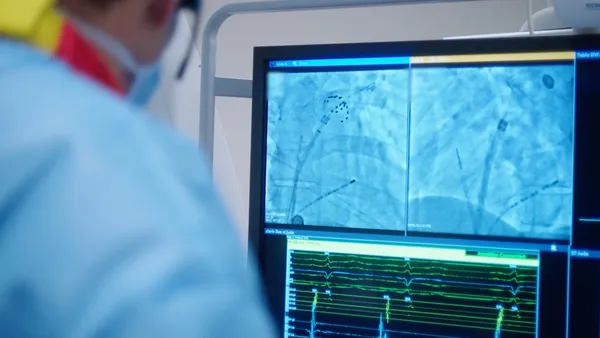Dive Brief:
- FDA took a step to more meaningfully include the perspective of patients in the medical device regulation process with the release Friday of draft guidance that outlines best practices for collecting such data. The input can be used in clinical studies and device development, evaluation and labeling.
- Pain intensity and anxiety level, for example, are unobservable concepts known only to the patient, but they can be measured with patient-reported outcome instruments — a term that encompasses patient diaries, measurements of pain severity and other symptoms, and questionnaires on quality of life, the agency said.
- The guidance is open for public comment through Oct. 30. In addition, FDA will hold two virtual public meetings to discuss patient preference information and patient-reported outcomes, on Sept. 29 and Sept. 30.
Dive Insight:
FDA said it considers how patients feel, function and survive to be valid scientific evidence of safety and effectiveness that can be considered in the evaluation and surveillance of medical devices. The data should be considered voluntary and complementary to other outcomes evidence, but may be recommended in some standards and guidance, the agency said.
In clinical studies, a patient-reported outcome instrument could be used to measure the effects of a medical treatment or changes in a patient's health. The information also could help determine whether a patient is eligible to be included in a study, and to measure primary or secondary safety and effectiveness endpoints, the guidance document suggests.
FDA encouraged manufacturers to seek feedback from the agency during the study design stage, before an investigational device exemption (IDE) is submitted or a pivotal trial is conducted, to determine the relevance and suitability of a proposed patient-reported outcome instrument to the benefit-risk assessment.
Further, outcomes important to patients should be measured and included in medical device submissions, FDA said. In addition to providing evidence of safety and effectiveness, the data could measure a device's effect on patient well-being and other concepts that may influence healthcare providers' decisions about possible treatments. Reliable patient data also could prove valuable in medical device labeling to communicate the effect of a treatment on patient symptoms, functioning or quality of life, FDA said.
The new guidance document comes nearly two years after the agency convened its Patient Engagement Advisory Committee to explore ways to incorporate the patient experience and priorities in device design, development and assessment. After the panel meeting, AdvaMed submitted comments to the agency that sought clarification on whether patient input would be sought from broader sources such as advocacy groups.
FDA said it encourages device makers to collaborate with patient organizations, medical groups and research institutions with expertise in patient-reported outcome instruments development. Patient-driven registries, electronic health records, claims and billing activities, product and disease registries, as well as health-monitoring devices could also help generate validity evidence, the agency said. In addition, technologies such as teleconferencing and videoconferencing may be used in conducting cognitive interviews.










